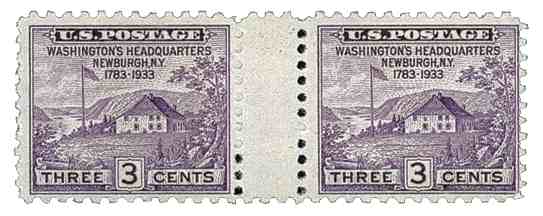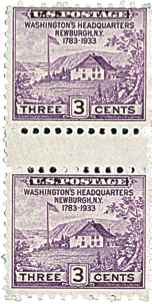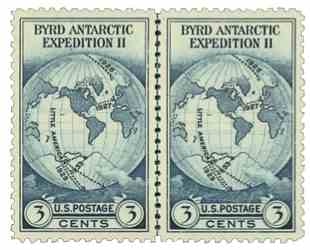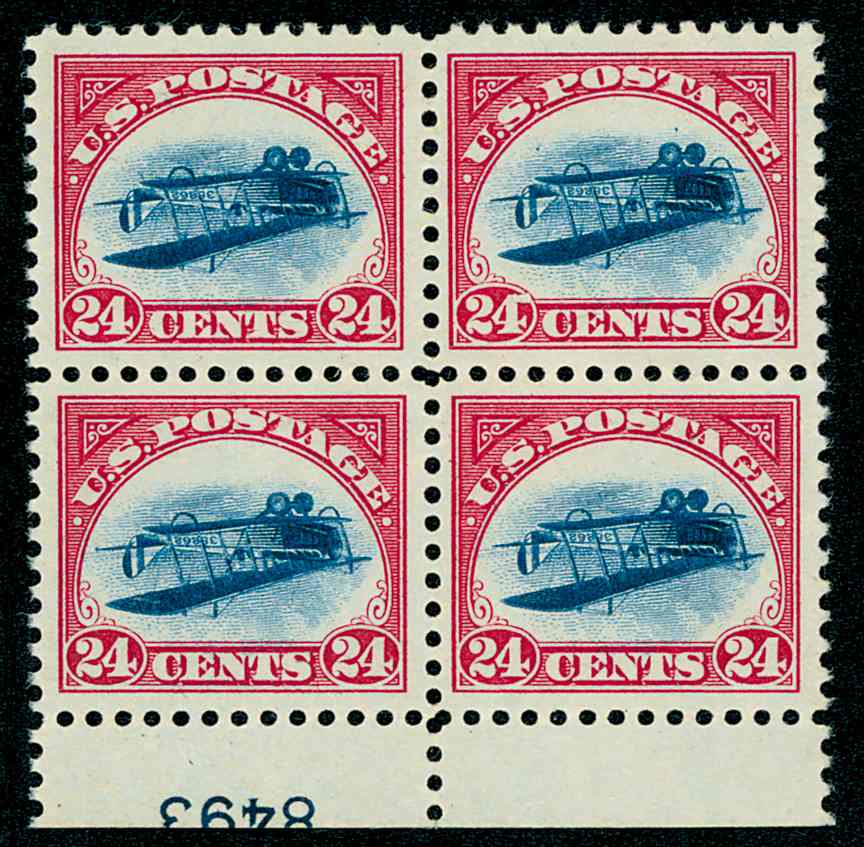How to collect seldom-seen formats
Collecting stamp position blocks and pairs is fun and rewarding. The legendary “Farley’s Follies” are a good example. They offer you the opportunity to own scarce stamps with a neat stamp story!
Each of the formats shown here can be difficult to find – “Farley’s Follies” were issued in large sheets that are way too big to fit in stamp albums. So smart collectors snapped up blocks and pairs in a variety of formats instead. They not only fit, but these key formats are an easy way to understand the stamp printing process. Here are some of the formats:
Arrow Block – V-shaped “arrows” are printed in the margins of stamp sheets as guides for cutting the sheet of 200 stamps into panes of 50 during stamp production. Arrow blocks are four stamps showing the V-shaped arrow and sheet margin. Four arrow blocks are found on full sheets of 200 stamps, one each on the top, bottom, left, and right of the sheet.

Cross Gutter Block – “gutters” are the margins between panes in a full sheet of stamps. Cross Gutter Blocks are four stamps connected by a horizontal gutter intersecting with a vertical gutter. This format is the scarcest of the gutter varieties.

Vertical Gutter Pair – a gutter pair consists of two stamps straddling a wide margin called a “gutter.” Below the gutter is vertical and the stamps horizontal. #752 was printed in sheets of 400 on a rotary press. The other 5 pairs are from small souvenir sheets printed 9, 20 or 25 to a sheet on a flat plate press. The gutter pair is made up of two stamps from adjoining souvenir sheets, with the gutter between the two souvenir sheets.

Horizontal Gutter Pair – horizontal gutter pairs are two stamps straddling a wide margin between the top of one stamp and the bottom of another. Each stamp is from a different pane on the stamp sheet.

Vertical Line Pair – vertical line pairs are two stamps with the guide line printed vertically between them. Running from top to bottom on the uncut stamp sheet, this line separates the panes of 50. So each pair is from two different panes! Vertical line pairs are hard to find.

Horizontal Line Pair – horizontal line pairs are two stamps with the printed guide line running horizontally between them. Running from side to side, this guide line also separates the panes of 50 on the uncut stamp sheet, creating pairs with each stamp coming from two different panes. These pairs are scarce – only 6 or 14 come from a full sheet of 200 stamps.

Plate Number Block – from 1894 to 1980, the Bureau of Engraving and Printing added plate numbers to each printing plate. Plate numbers generally appear on each printed pane. Many panes feature only one plate number block, which makes this position scarce.



Awesome image of the Jenny Inverts!
Why, in the case of the Byrd Expedition stamp #753, is the mint top arrow block valued significantly higher than the mint side arrow block?
The top margin is much wider than the sides and bottom margins. This has made the top arrow block more popular with collectors. The top arrow block is much harder to find today.
thank u this is very helpfull